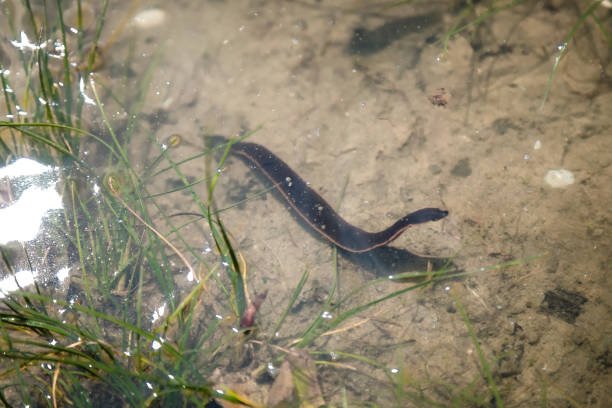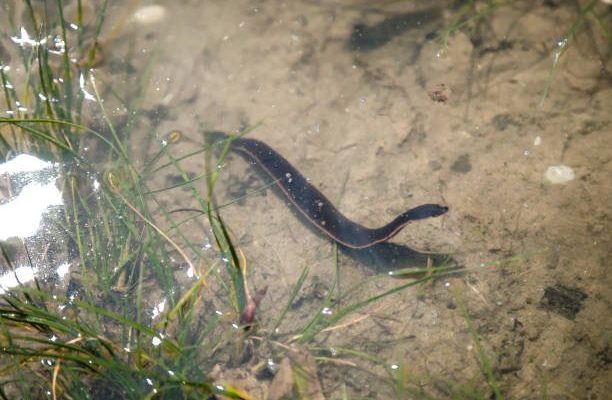
Leeches belong to the subclass Hirudinea, and they can be found in freshwater, saltwater, and some terrestrial environments. While they can be a nuisance to swimmers, they are essential players in their habitats. Think of them as both scavengers and predators, helping regulate species populations and contributing to nutrient cycling. But like any other species, they can come with their own set of challenges. So, let’s take a closer look at both the good and the not-so-good aspects of these intriguing creatures.
Leeches as Ecosystem Engineers
Leeches are often referred to as “ecosystem engineers” because they play a crucial role in shaping their environment. Ecosystem engineers are species that create, modify, maintain, or destroy habitats. By burrowing into sediment and moving through the water, leeches help to aerate the soil and organic material, promoting the health of aquatic plants and other organisms. This process allows for better water flow and nutrient exchange in their habitats.
Moreover, leeches serve as a food source for various animals, including birds, fish, and amphibians. By occupying a specific niche in the food web, they help to support a diverse range of species. When leech populations are thriving, they contribute to a balanced ecosystem, ensuring that no single species becomes dominant. This balance is vital for maintaining biodiversity, which is essential for the resilience of ecosystems.
In essence, leeches help maintain the “community health” of their environments. By processing organic matter and serving as prey, they contribute to the intricate web of life that sustains countless other species.
Leeches and Nutrient Cycling
Nutrient cycling is another vital ecological benefit provided by leech populations. When leeches feed on decomposing organic matter, they break it down into simpler forms. This process allows nutrients to be released back into the ecosystem, making them available for plants and other organisms. Picture this like a recycling program for nutrients—leech populations ensure that nothing goes to waste.
Additionally, the excretion of leeches enriches the sediment with nutrients, further boosting the health of aquatic habitats. When leeches digest their food and expel waste, they create a nutrient-dense environment that benefits microorganisms and other aquatic life. This nutrient cycling is crucial for maintaining the productivity of freshwater ecosystems, which are often under threat from pollution and habitat degradation.
Without leeches, many aquatic ecosystems would be less productive and more susceptible to imbalances. Their contributions to nutrient cycling are essential for healthy plant growth and trophic interactions, making them an important part of the ecological puzzle.
The Predatory Nature of Leeches
While leeches can be quite beneficial, it’s important to acknowledge their predatory nature. Many species of leeches are carnivorous, preying on small aquatic animals like insects and sometimes even small fish. You might be wondering how this fits into the ecosystem. Well, just as leeches help control the populations of detritivores (organisms that feed on decomposing matter), they can also help keep the populations of certain fish and insects in check.
This predator-prey relationship is an essential aspect of maintaining a balanced ecosystem. If leech populations were to decline, you could see an overpopulation of smaller aquatic creatures, which could lead to changes in plant life and water quality. However, an overabundance of leeches can also have detrimental effects, especially if their populations grow unchecked.
In essence, leeches serve as a natural form of pest control in their habitats. While they help maintain balance, they can also contribute to ecological challenges if their populations shift dramatically.
Negative Impacts of Leeches
Despite their ecological benefits, leeches can also have drawbacks. One of the most immediate concerns is their potential to affect human activities. For instance, leech infestations in swimming areas can be a significant nuisance for recreational swimmers and fishermen alike. The thought of being bitten by a leech can deter people from enjoying natural water bodies.
Moreover, in some instances, an overpopulation of leeches can impact fish populations. When leech numbers spike, they can consume large quantities of fish eggs and juvenile fish, which may lead to declines in fish populations. This is especially concerning for anglers and communities that rely on fishing as a food source or for their livelihoods.
It’s important to note that while leeches may be bothersome to humans, they are often indicators of a healthy aquatic ecosystem. So, it’s a balancing act—recognizing their role in nature while managing their impacts on human interests.
Leeches and Human Health
Interestingly, leeches have been used in medicine for centuries. The ancient practice of hirudotherapy, or using leeches for therapeutic purposes, has seen a resurgence in modern medicine. Leeches can secrete anticoagulants, which can help prevent blood clots in certain medical conditions. They are sometimes used in reconstructive surgery and to treat certain skin conditions.
However, this medical utility comes with risks. Leeches can carry harmful pathogens, and improper use can lead to infections. So while they offer fascinating possibilities for human health, they also require careful handling and understanding.
It’s a classic case of “with great power comes great responsibility.” Leeches can contribute to our health, but only when managed properly and under medical supervision.
Conservation of Leech Populations
Given their ecological importance, understanding and conserving leech populations is crucial. Many freshwater ecosystems are under threat due to pollution, climate change, and habitat destruction. As these habitats degrade, leech populations may decline, leading to cascading effects on the ecosystem.
Conservation efforts focused on protecting wetlands, streams, and other aquatic environments can help ensure the survival of leech populations. Healthy habitats are fundamental for their continued role as ecosystem engineers, ensuring that they can fulfill their important functions.
Furthermore, raising awareness about the ecological benefits of leeches can change public perception. Instead of being viewed solely as pests, leeches can be recognized for their contributions to biodiversity, nutrient cycling, and overall ecosystem health.
So, what’s the takeaway about leech populations? They are, without a doubt, complex creatures with both admirable contributions to the ecosystem and some drawbacks. While they may not be the most charming of animals, their role in nutrient cycling, as predators, and in maintaining ecosystem balance is invaluable.
By understanding the ecological benefits and drawbacks of leeches, we can better appreciate their place in the natural world. Rather than shunning them, maybe it’s time we recognized them as crucial players in maintaining healthy ecosystems. So next time you come across a leech, think about how that little creature is connected to the health of the environment around us. It’s a wild world out there, and every species has a part to play!

